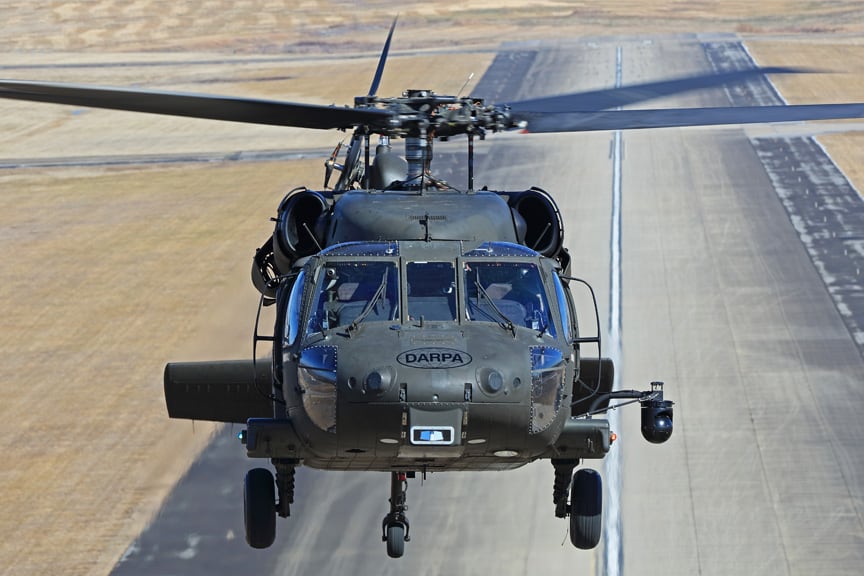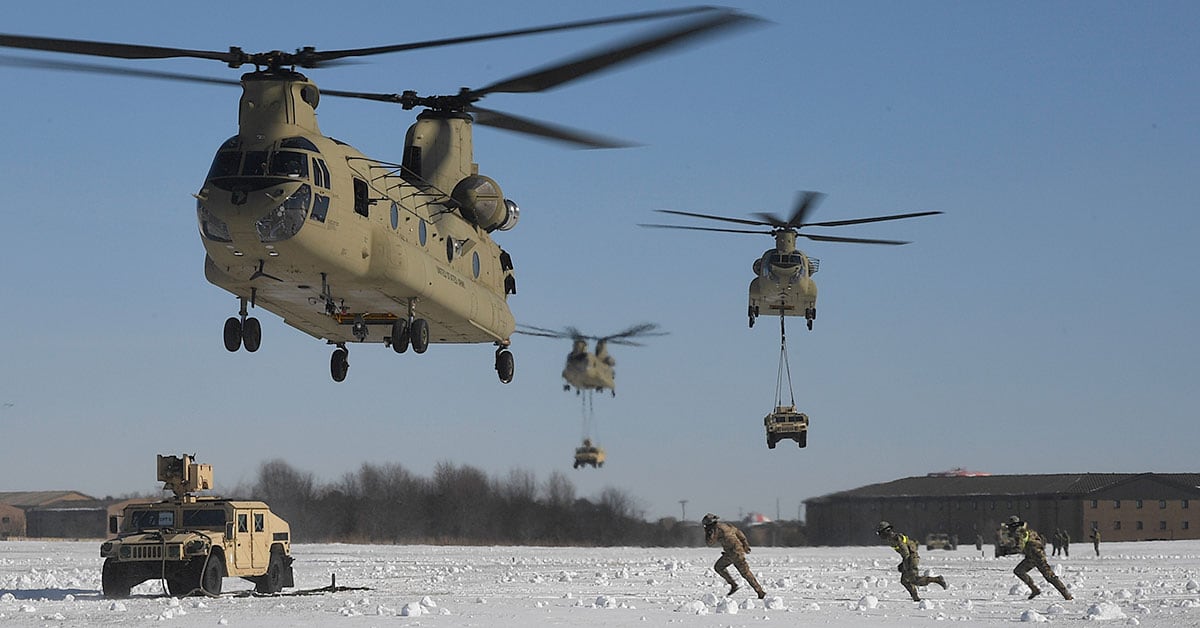WASHINGTON — A UH-60 Alpha-model Black Hawk helicopter flew for the first time entirely unmanned as part of the Defense Advanced Research Projects Agency’s Aircrew Labor In-Cockpit Automation System (ALIAS) program, Sikorsky announced Feb. 8.
Lockheed Martin-owned Sikorsky and DARPA have been working on ALIAS for roughly six years, but have always had a pilot in the aircraft just in case, even if the helicopter performed the flight entirely on its own.
There’s a switch in the helicopter called the “210 switch,” Igor Cherepinsky, director of Sikorsky Innovation, told reporters during a Feb. 8 virtual press briefing. The switch indicates how many pilots are present in the aircraft; for the first time before the flight, it was turned to zero.
For 30 minutes, the ALIAS Black Hawk flew without anyone inside over Fort Campbell, Kentucky, on Feb. 5 and then again on a shorter flight on Feb. 7.
The aircraft performed pre-flight checks, took off and ran through a simulated Light Detection and Ranging (LiDAR) system depicting the congested and complex New York City skyline. The 14,000-lb aircraft responded autonomously to the simulated skyscrapers, weaving through Manhattan, according to Cherepinsky. Then the aircraft landed by itself.
The Black Hawk uses the Sikorsky MATRIX autonomy system designed to help pilots and aircrew when flying in degraded environments, including ones with limited visibility or lacking reliable communications.
Sikorsky developed the MATRIX technology through its Sikorsky Autonomy Research Aircraft (SARA). U.S. Army pilots took it for a spin in 2018 for the first time as the service continues to work toward the option to make both the current fleet and future fleet under development optionally manned.
ALIAS integrates a high level of automation into manned aircraft and has the capability to take on additional autonomy capabilities.

“ALIAS aims to support execution of an entire mission from takeoff to landing, including autonomously handling contingency events such as aircraft system failures. Easy-to-use interfaces facilitate supervisor-ALIAS interaction,” the company statement said.
“With reduced workloads pilots can focus on mission management instead of the mechanics,” Stuart Young, program manager in DARPA’s Tactical Technology Office, said. “This unique combination of autonomy software and hardware will make flying both smarter and safer.”
DARPA and Sikorsky have together invested roughly $160 million in the ALIAS program. The plan is to wrap up the program by the end of the year, Young said. The split between the two, Young said, was relatively even.
ALIAS brings operational flexibility to the Army, he said. “This includes the ability to operate aircraft at all times of the day or night, with and without pilots, and in a variety of difficult conditions, such as contested, congested, and degraded visual environments,” Young added.
A leading cause of Army aviation mishaps is a combination of human error and degraded visual environments. The service continues to seek systems that will help offload the burden on the pilot in these environments.
RELATED

“Even in today’s most automated aircraft, pilots must still manage complex interfaces and respond to unexpected situations,” the statement said.
ALISA will also allow the Army to fly in conditions that normally ground a helicopter.
The system could ultimately be incorporated into the Army’s Future Vertical Lift programs as they continue through the development process.
Young and Cherepinsky said DARPA will transition the capability to the Army so it can kit out its current and future fleets with tailorable autonomous capability.
ALIAS previously flew an autonomous resupply mission at Project Convergence in 2021 at Yuma Proving Ground, Arizona. Next month, the program will conduct the first flight of a fly-by-wire Mike-model Black Hawk, the most modern version of the Army’s utility helicopter fleet, at Fort Eustis, Virginia, the statement noted.
Jen Judson is an award-winning journalist covering land warfare for Defense News. She has also worked for Politico and Inside Defense. She holds a Master of Science degree in journalism from Boston University and a Bachelor of Arts degree from Kenyon College.




